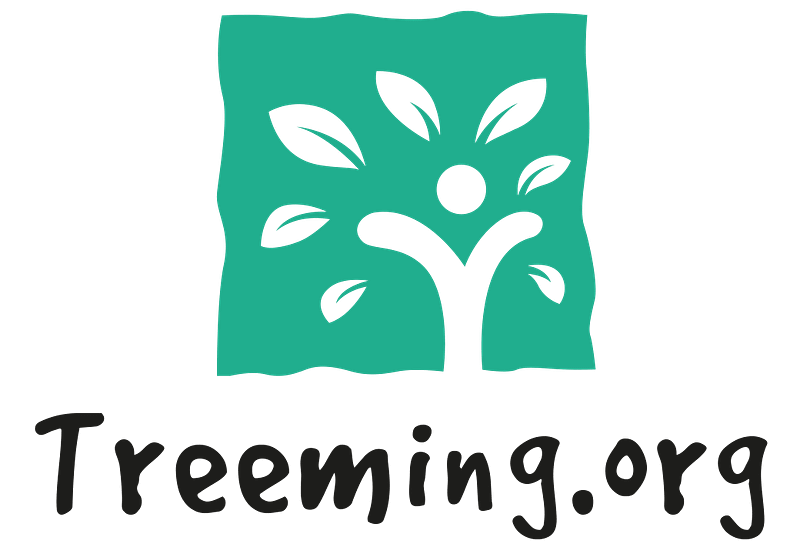In today’s world, we’re all glued to our devices. But what if we took a break? Forest bathing, or Shinrin-Yoku, is a Japanese practice that helps us reconnect with nature. It’s like a digital detox but with trees. Combining this with yoga could be just what we need to find balance. Both practices encourage mindfulness and can boost our well-being. Let’s explore how these two can work together.
Key Takeaways
- Forest Bathing, or Shinrin-Yoku, is a Japanese practice that involves immersing yourself in nature to improve mental and physical health.
- Digital detoxing is becoming more important as our lives become increasingly dominated by screens and technology.
- Combining forest bathing with yoga can enhance the benefits of both, promoting relaxation and mindfulness.
- Incorporating nature into daily routines can help reduce stress and improve overall well-being.
- Both forest bathing and digital detox can be practiced by anyone, anywhere, even in urban settings.
Understanding Forest Bathing and Digital Detox
The Origins of Shinrin-Yoku
Shinrin-Yoku, or forest bathing, is a practice that began in Japan in the 1980s. It’s all about soaking in the forest atmosphere, engaging all your senses. Forget about hiking or working out; this is more about strolling through the woods, breathing in the fresh scent of trees, and feeling the earth beneath your feet. The goal? To connect with nature in a way that boosts both your mental and physical health.
Digital Detox: A Modern Necessity
In today’s world, screens are everywhere. We’re constantly checking our phones, laptops, and tablets. This digital overload can mess with our mental and physical well-being. That’s where digital detox comes in. It’s about taking a break from all things digital to recharge your mind. Think of it as a reset button for your brain. By stepping away from screens, you can lower stress and improve your mood.
How Forest Bathing Complements Digital Detox
Combining forest bathing with a digital detox can be a game-changer. When you unplug and immerse yourself in nature, you’re giving your brain a much-needed break. The peacefulness of the forest helps reduce stress, while the absence of screens allows your mind to relax and rejuvenate. It’s like hitting two birds with one stone. Plus, it’s a great way to reconnect with the world around you without the constant ping of notifications.
The Science Behind Forest Bathing
Health Benefits of Shinrin-Yoku
Forest bathing, known as Shinrin-Yoku, offers a wealth of health benefits. One of the most significant is stress reduction. In our hectic lives, stress is an unwelcome companion, but spending time in nature can help alleviate it. Studies show that being in the forest lowers cortisol, the stress hormone, which can lead to a calmer state of mind. Moreover, forest environments can enhance mood, making us feel more relaxed and content.
Research on Nature and Mental Health
Research has consistently shown that nature has a positive impact on mental health. For instance, a study by the Nippon Medical School found that participants who practiced Shinrin-Yoku had lower anxiety levels and improved psychological well-being. The natural surroundings can also boost cognitive functions like creativity and focus, offering a mental reset that many of us need.
The Role of Phytoncides in Wellness
A fascinating aspect of forest bathing is the role of phytoncides—natural compounds released by trees. These compounds can boost our immune system by increasing white blood cell production. Breathing in forest air rich in phytoncides can make us more resilient to illnesses. This, combined with the serene environment, makes forest bathing an effective way to enhance overall wellness.
Forest bathing serves as a remedy for modern life’s distractions, deadlines, and obligations, promoting mental well-being through immersion in nature. By simply being present in a forest setting, we can tap into a natural source of health and tranquility.
Incorporating Forest Bathing into Daily Life
Simple Steps to Practice Shinrin-Yoku
Getting started with forest bathing is easier than you might think. You don’t need any special gear or training, just a willingness to unplug and be present. Here’s a quick guide to help you dive in:
- Pick Your Spot: Find a local park, garden, or any green space. It doesn’t have to be a vast forest; even a small patch of trees can work wonders.
- Leave Tech Behind: Switch off your gadgets. The idea is to connect with nature, not your phone.
- Take It Slow: Walk leisurely, breathe deeply, and let your senses soak in the surroundings. Notice the rustling leaves, birds chirping, and the earthy scent of the forest.
- Engage Your Senses: Touch the bark of trees, listen closely to nature’s sounds, and savor the freshness of the air. Each sensory experience brings a new layer of relaxation.
- Be Silent: Find a spot to sit quietly. Let your mind wander or just enjoy the stillness. Silence can be surprisingly refreshing.
- Make It a Habit: Regular visits, even short ones, can offer significant benefits. Try to make it a part of your weekly routine.
Creating a Nature-Centered Routine
Incorporating nature into everyday life doesn’t have to be complicated. Here are some ideas:
- Morning Walks: Start your day with a walk in a nearby park. It’s a great way to wake up your senses and set a positive tone for the day.
- Bring Nature Indoors: Add plants to your home or office. They not only purify the air but also bring a bit of the outdoors inside.
- Weekend Getaways: Plan regular trips to natural settings. These don’t have to be long or far, just enough to recharge and reset.
Creating a routine that includes nature can help balance the hustle and bustle of daily life, offering a peaceful refuge from constant digital noise.
Bringing Shinrin-Yoku into Urban Settings
Living in a city doesn’t mean you can’t enjoy the benefits of forest bathing. Here’s how to make it work:
- Explore Urban Parks: Cities often have parks or botanical gardens. These can be perfect spots for a quick escape.
- Join Local Groups: Look for community groups that organize nature walks or outdoor activities. It’s a fun way to meet people and explore new areas.
- Use Your Balcony: If you have a balcony, turn it into a mini-garden. Even a few potted plants can create a calming space.
Incorporating forest bathing into your life can align with the Gaia theory, enhancing your well-being by fostering a sense of harmony with the environment. Whether you’re in the heart of the city or the suburbs, nature is always within reach if you know where to look.
Forest Bathing and Yoga: A Perfect Pair
Synergistic Benefits of Yoga and Nature
Yoga and forest bathing together offer a powerful combination for nurturing both the mind and body. While yoga helps improve flexibility, strength, and mental clarity, forest bathing enhances these benefits by providing a serene natural backdrop. The combination of these practices allows individuals to deepen their relaxation and mindfulness. Imagine doing your yoga stretches under a canopy of trees, breathing in fresh, earthy air that calms your senses. It’s not just exercise; it’s a holistic experience that rejuvenates your spirit.
Mindfulness Practices in Forest Settings
Forest settings naturally encourage mindfulness. When practicing yoga in the woods, you can tune into the sounds of rustling leaves and chirping birds, which grounds your awareness in the present moment. This setting helps you focus on your breath and the sensations in your body, making your yoga practice more effective. Here’s how you can incorporate mindfulness in forest yoga:
- Start with a short meditation, focusing on your surroundings.
- Perform gentle yoga sequences, paying attention to each movement.
- End with deep breathing exercises, synchronizing with the natural sounds around you.
Enhancing Yoga with Natural Elements
Nature adds a unique dimension to yoga practice. The uneven ground challenges your balance, engaging different muscles than a flat studio floor. The natural light and fresh air invigorate your senses, making each yoga session feel refreshing. Moreover, practicing yoga outdoors can help reduce stress and anxiety, promoting a sense of peace and well-being. By combining yoga with forest bathing, you foster authentic connections with yourself and the environment, enhancing your overall health and happiness.
The Impact of Digital Detox on Well-being
Reducing Screen Time for Mental Health
In today’s world, we’re glued to our screens. Whether it’s for work, social media, or just scrolling through endless content, screen time is at an all-time high. Cutting down on screen time can significantly improve mental health. It’s not just about avoiding eye strain or headaches; it’s about giving your mind a break from constant stimulation. Studies have shown that reducing screen exposure can lower stress levels and decrease symptoms of anxiety and depression.
Strategies for Effective Digital Detox
Finding the right way to unplug can be tricky, but it’s essential for your well-being. Here are some simple strategies to help you detox from the digital world:
- Set specific "no screen" hours, like during meals or before bed.
- Replace screen time with activities like reading a book or going for a walk.
- Use apps that track your screen time and set limits.
- Have tech-free zones in your home, like the bedroom or dining area.
- Try a "digital fast" where you go without screens for a whole day each week.
Long-term Benefits of Disconnecting
Taking a break from digital devices isn’t just a short-term fix; it can lead to lasting improvements in your quality of life. Regular digital detoxes can enhance your concentration, improve your sleep, and increase your overall happiness. Over time, you’ll find that you’re more present in your daily interactions and more attuned to the world around you.
In a world that’s always connected, disconnecting can be a powerful way to reclaim your peace of mind. It’s about finding balance and giving yourself the space to breathe and think without the constant buzz of notifications.
By embracing periods of digital detox, you allow yourself to reset and recharge, paving the way for a healthier, more balanced life. The key is to find what works for you and make it a regular part of your routine.
Forest Bathing for Families and Children
Engaging Kids with Nature
Kids have a natural curiosity, and Shinrin-Yoku lets them explore this in a fun way. It’s like an outdoor treasure hunt where they can look for animal tracks, identify plants, or just enjoy the sounds of nature. Leave screens behind and let the forest’s "magic" be the focus. Try easing into this with short, device-free outings if your child is used to having a screen. Over time, it’ll become a natural part of their routine.
Family-Friendly Shinrin-Yoku Activities
- Nature Journaling: Bring along a notebook for sketching or jotting down thoughts about what your child sees. This encourages creativity and reflection.
- Deep Breathing Exercises: Teach kids to breathe deeply, like "smelling the flowers" and "blowing out the candles"—a fun way to practice mindfulness.
- Gratitude Moments: At the end of your outing, share something you’re grateful for. It’s a simple way to connect and appreciate the experience.
Building Resilience Through Nature
Regular forest visits can help kids develop emotional resilience. Nature offers a calming backdrop that reduces stress and anxiety, while boosting mood and focus. Plus, breathing in forest air, rich with phytoncides, might even give their immune system a little boost. Make it a weekly or monthly family ritual to spend time in nature, reinforcing these positive effects and building a lasting connection with the outdoors.
Consistency is key. By making Shinrin-Yoku a regular part of your family’s life, you’re not only helping your kids unplug from digital distractions but also giving them a chance to appreciate the natural world. It’s about finding balance and enjoying the simple wonders of nature together.
Exploring the Therapeutic Effects of Nature
Stress Reduction Through Nature
Nature has a remarkable way of soothing our stressed minds. Imagine walking slowly through a lush forest, the soft crunch of leaves underfoot, and the gentle rustle of branches overhead. This isn’t just a pleasant escape; it’s a powerful stress-buster. Spending time in nature can lower cortisol levels, the hormone responsible for stress. Forest environments provide a break from the constant stimuli of modern life, offering a natural balm for our frazzled nerves.
Improving Mood and Focus
Feeling down or struggling to concentrate? A dose of nature might be just what you need. The sights and sounds of the natural world are not only calming but also invigorating. Studies suggest that exposure to green spaces can significantly enhance mood and boost focus. The tranquility of a forest walk or the simplicity of a park visit can help clear mental fog, making it easier to tackle daily tasks with renewed energy.
Nature as a Tool for Emotional Balance
Nature offers more than just a temporary escape; it can be a tool for long-term emotional balance. Regular visits to natural settings can lead to lasting improvements in emotional health. The act of being present in nature encourages mindfulness, helping individuals to process emotions and find peace. By integrating nature into our routines, we can cultivate a stable emotional foundation, reducing feelings of anxiety and depression.
Embracing the natural world isn’t just about finding peace; it’s about rediscovering a part of ourselves that’s often lost in the hustle of daily life. The therapeutic effects of nature aren’t just a luxury—they’re a necessity for our well-being.
For children, Shinrin-Yoku offers a wonderful way to unplug from digital distractions and reconnect with the world around them. This practice helps reduce stress, enhances mood, and improves focus, promoting overall well-being.
Conclusion
In wrapping up, it’s clear that both forest bathing and digital detox offer a refreshing escape from our tech-heavy lives. Forest bathing, or Shinrin-yoku, lets us reconnect with nature in a way that’s both calming and rejuvenating. It’s like hitting the reset button for our minds and bodies. On the flip side, taking a break from screens helps us find balance and reduces the stress that comes with constant digital noise. Together, these practices remind us of the simple joys of being present and the importance of stepping back from our devices every now and then. So, next time you’re feeling overwhelmed, maybe try a walk in the woods or just unplug for a bit. You might be surprised at how much better you feel.
Frequently Asked Questions
What is forest bathing?
Forest bathing, or Shinrin-Yoku, is a Japanese practice where you spend time in nature, usually a forest, to relax and enjoy the surroundings. It’s about being present and using all your senses to connect with nature.
How does digital detox help our health?
Digital detox means taking a break from screens and technology. It helps reduce stress, improve sleep, and boost mental health by giving your brain a rest from constant digital input.
Can kids do forest bathing?
Yes, kids can definitely try forest bathing! It’s a fun way for them to explore nature, use their senses, and take a break from screens. They can walk, listen to birds, or just enjoy the fresh air.
What are the benefits of combining forest bathing with digital detox?
Combining forest bathing with digital detox can enhance relaxation and mental clarity. It helps people disconnect from technology and reconnect with nature, which can improve mood and reduce stress.
How can I start practicing forest bathing?
To start forest bathing, find a nearby park or forest, leave your phone behind or on silent, walk slowly, and pay attention to the sights, sounds, and smells around you. Try to do this regularly for the best benefits.
Is forest bathing only for people who like hiking?
No, forest bathing is not about hiking or exercise. It’s about being mindful in nature, so anyone can do it, even if they don’t like hiking. You can sit under a tree or walk slowly to enjoy the experience.







